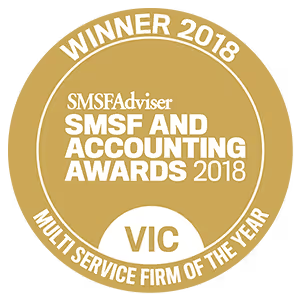One of the exciting benefits of a self-managed super fund (SMSF) is that your investment options are much more varied. You have the opportunity to invest your money where you see fit, and the ability to tailor your investments to your interests.
But while it might seem like your SMSF investment options are endless, you still need to invest wisely.
When it comes to setting up your SMSF investment for long-term success, it’s important to do it right. Contact Liston Newton Advisory today to discuss your SMSF investment strategy.
The aim of your SMSF investments
Setting up good long term investments in your self-managed super fund is all about determining your overall objective. What are you trying to achieve?
Your SMSF provides for your retirement
The purpose of superannuation is to provide for your retirement. So, your investments should reflect this.
To work out what investments you should have in your SMSF, you need to envisage the sort of life you want in your retirement.
- How do you want to live?
- Do you want to take regular holidays?
- How much would you like to spend per annum?
When retired, most people generally find it difficult to reduce the quality of life the enjoyed while working. After all, you’ve worked hard to reach retirement—so you want to be able to enjoy it.
So a starting point for your SMSF investment aim should be a like-for-like replacement of your after-tax work income with your SMSF income. How much do you currently need to live each year?
Determine your preferred annual income
Once you determine how much income you need per annum, it's then a matter of doing some financial modelling. This will help determine the types of investments that will help you achieve that income over the long term. Your financial adviser will be able to help you with this.
This is where asset allocation becomes very important. You need to determine which assets are best suited to your situation.
This may mean some growth assets, like:
- Australian shares
- International shares
- Property
- Unlisted investments.
It may also mean some defensive assets, such as:
- Fixed interest
- Term deposits
- Cash.
Having a diversified portfolio works to reduce the potential for risk.
The important thing to remember is that it shouldn’t be about achieving the highest return possible. Chasing high returns in this manner can be successful, but it comes with a higher risk of low returns, too. This level of risk can present an unstable and dangerous future for your personal wealth.

Living with risk
When it comes to your investments’ level of risk, it’s all down to your appetite. Investing your SMSF safely is about getting the level of return that will help you achieve your goals, while taking on the least amount of risk. If you’re comfortable living on the edge, it’s up to you.
Here are some typical types of investments you can make, and their corresponding level of risk.
- Low risk. Cash, term deposits, and fixed interest securities
- Medium risk. Blue chip shares, hybrid securities, property, and balanced managed funds
- High risk. Commodities, currencies, private equity, or hedge funds
If you’re unsure of your SMSF investment options, and the level of risk you’re willing to take on, speak to your financial adviser. They will provide you with reliable, experienced advice on where to invest your SMSF money so that it meets your objectives.
Tax considerations
You also need to take into consideration the tax structure of an SMSF when looking at investments. For example, fully franked dividends are particularly attractive in a SMSF due to the franking credits, whereas property and international investments don't have franking credits.
Advice to avoid
Making investments based on tips from friends
This is what we call ‘BBQ advice’.
The people that most commonly don't like investing in shares are those that have had a bad experience. They may have received a tip from a friend and it went bad, so they write off the whole market.
This is the same as getting medical advice from an untrained friend, then writing off the whole field of medical science as being too risky.
It’s imperative that you get advice that’s tailored to your situation, so you can select investments that suit your objectives. Just because a friend gave you a tip, or did well with a particular investment, doesn’t mean that it’s right for you.
Investing for the biggest return possible
People often try to get the biggest return they can, when in actual fact it’s not necessary for them to take on that amount of risk.
This is where proper financial modelling comes into play. With proper financial modelling, you may find that you only need to get a 4% return every year for the next 15 years. Without this modelling, you might be tempted to chase 15% returns on risky investments.
Given this aggressive investment strategy you’re likely to end up losing money quickly, rather than achieving your goals gradually. If you only need 4% returns each year to achieve your desired lifestyle, it’s not worth the risk letting greed take over.
Investing for tax breaks
The last two decades has been littered with poor investments that were made because of the large tax deductions that were possible. Things like tree farms, almond plantations, and even ostrich farms. It seems that every few years a new investment scheme appears, devised to provide some sort of extra tax deduction.
But if you focus too much on investing to minimise your tax—or avoid paying it altogether—rather than the underlying investment, it can be a recipe for disaster.
Investing in collectables
Investing in collectables like art or classic cars can be a rewarding experience. You’re taking a passion and turning it into an investment. However, in the current market there’s no such thing as a guaranteed investment. Trends come and go, and selling can often be difficult due to the lack of a buyer.
Unless you have in-depth knowledge of the collectable market you’re targeting, it’s recommended to avoid collectable investment.

SMSF investment option considerations
When it comes to SMSF investment options, you need to keep two important things in mind.
Will you be comfortable holding this investment for the long term? Investments can decrease in value over the short term. If you don't know why you’re invested in something, it can be tempting to sell it as soon as it decreases in value.
Does the investment match up to your objectives? If your goal is to produce income, does the investment deliver? If you’re after high growth, is the investment likely to produce that? If your investment isn’t aligning with your objectives, then it’s time to re-evaluate.
The final word
Investing in an SMSF is a long-term game, so it pays to take the time upfront to make sure your investments are right for your needs. Take advantage of thorough financial modelling. Once you know what you’re trying to achieve, you’re then able to make an informed decision on how to best construct your portfolio.
When it comes to SMSF investment options, the safest options is to avoid picking what's “hot" today—think long term.






